
LG G6 32 GB Prices
Important Note.
- All prices are in Pakistani Rupee (PKR)
- Prices may vary at stores and our effort will be to provide you with the updated prices.
- The latest price of LG G6 32 GB was obtained on 17 مئی, 2019. The prices at the original stores had been updated on the respective mentioned dates.
- Find out WhatMobile price has dropped in Pakistan by selecting Notify Price Drop button
- Find out WhatMobile has better specifications by clicking Add To Compare Button find out what Mobile has better reviews by visiting our reviews section
- Find out WhatMobile is cheaper on which retailer by clicking Compare prices from retailers button
Search Terms
- LG G6 32 GB
Specifications
| GENERAL | |
| 2G Network | GSM 850 / 900 / 1800 / 1900 - SIM 1 & SIM 2 (dual-SIM model only) |
|---|---|
| 3G Network | HSDPA 850 / 900 / 1700(AWS) / 1900 / 2100 |
| 4G Network | LTE band 1(2100), 2(1900), 3(1800), 4(1700/2100), 5(850), 7(2600), 8(900), 12(700), 13(700), 17(700), 20(800), 28(700), 38(2600), 40(2300) |
| Sim | Single SIM (Nano-SIM) or Hybrid Dual SIM (Nano-SIM, dual stand-by) - IP68 certified - dust/water proof over 1.5 meter and 30 minutes - Water resistant up to 1 meter and 30 minutes - MIL-STD-810G compliant |
| Announced | 11/02/2016 |
| Status | Available. Released 2017, March |
| BODY | |
| Dimensions | 148.9 x 71.9 x 7.9 mm (5.86 x 2.83 x 0.31 in) |
| Weight | 163 g (5.75 oz) |
| DISPLAY | |
| Display Size | 5.7 inches, 84.1 cm2 (~78.6% screen-to-body ratio) |
| Resolution | 1440 x 2880 pixels, 18:9 ratio (~564 ppi density) |
| MultiTouch | Yes |
| Protection | Corning Gorilla Glass 3 - Dolby Vision/HDR10 compliant - Always-on display - LG UX 6.0 UI |
| SOUND | |
| AlertTypes | Vibration; MP3, WAV ringtones |
| LoudSpeaker | Yes |
| 3.5mm jack | Yes - 32-bit/192kHz audio - Active noise cancellation with dedicated mic |
| MEMORY | |
| CardSlot | microSD, up to 256 GB (uses SIM 2 slot) - dual SIM model only |
| Internal | 32 GB, 4 GB RAM |
| DATA | |
| GPRS | Yes |
| EDGE | Yes |
| Speed | HSPA 42.2/5.76 Mbps, LTE-A (3CA) Cat12 600/150 Mbps |
| WLAN | Wi-Fi 802.11 a/b/g/n/ac, dual-band, Wi-Fi Direct, DLNA, hotspot |
| Blue Tooth | 4.2, A2DP, LE, aptX HD |
| NFC | Yes |
| USB | 3.1, Type-C 1.0 reversible connector, USB On-The-Go |
| CAMERA | |
| Camera Primary | Dual: 13 MP (f/1.8, 1/3", 1.12 µm, 3-axis OIS, PDAF) + 13 MP (f/2.4, no AF), phase detection autofocus, dual-LED flash, |
| Camera Features | Geo-tagging, touch focus, face detection, HDR |
| CameraVideo | 2160p@30fps, 1080p@30/60fps, HDR, 24-bit/192kHz stereo sound rec |
| CameraSecondary | 5 MP, f/2.2, 1080p |
| FEATURES | |
| Processor Cores | Quad-Core |
| OS | Android OS, 7.0 (Nougat) |
| CPU | Quad-core (2x2.35 GHz Kryo & 2x1.6 GHz Kryo) |
| Sensors | Fingerprint (rear-mounted), accelerometer, gyro, proximity, compass, barometer |
| Messaging | SMS(threaded view), MMS, Email, Push Mail, IM |
| Browser | HTML5 |
| Radio | FM radio (market dependent) |
| GPS | Yes, with A-GPS, GLONASS, BDS |
| Java | No |
| Colors | Mystic white, astro black, ice platinum, terra gold, marine blue, mystic white |
| Others | - WPC&PMA wireless charging (US version only) - Fast battery charging: 50% in 30 min (Quick Charge 3.0) - MP4/DviX/XviD/H.265 player - MP3/WAV/FLAC/eAAC+ player - Photo/video editor - Document editor |
| BATTERY | |
| Battery | Non-removable Li-Po 3300 mAh battery |
| MISC | |
| SARUS | 0.65 W/kg (head) 1.23 W/kg (body) |
| SAREU | 0.23 W/kg (head) 0.15 W/kg (body) |
Reviews
15/05/2017 - 12:50pm
As 2016 drew to a close, the rumour mill was in full swing and it painted a pretty amazing picture of what was coming in 2017.
Folding phones. Bendy phones. Super-powered phones. New iPhones that looked like new iPhones. Things were looking up after a dismal 2015 and a slightly better 2016.
New releases from Samsung as well as huge steps forwards with imaging and overall computational performance from everybody in the space were expected. As ever, the big releases were Samsung and Apple-related. But I am always excited to see what BlackBerry, LG, OnePlus and Huawei do.
From the vantage point of late-2016, 2017 sounded like it was going to be a bad ass year for phone releases.
However, I’ve yet to have my socks blown off by anything just yet; although Paul assures me the Galaxy S8 Plus is every bit as good as people are saying. I guess I’ll just have to take his word for it.
The Huawei P10 was the first phone I tested of 2017 and that phone was certainly an odd one; it was good at all the things it should be good at, it has a nice design, and the battery life is decent. But it just didn’t get my juices flowing; it just felt like Huawei wasn’t pushing itself – not as much as usual, anyway.
Can the LG G6 bring some much needed excitement to the table? Is it a genuine Galaxy S8 contender? Or has LG missed the mark once again with its all-important flagship release?
LG G6 Review: Design
I was a big fan of the LG G5 and I’m not afraid to admit this, despite the handset’s unpopularity with shoppers last year. I liked the way it looked, loved the imaging technology it featured, which was well ahead of the curve, and overall just really enjoyed using the handset.
The LG G6 is A LOT more sensible. There is nothing loud, over the top or in your face about the design language, the proportions or any of its styling for that matter. To me, the LG G6 looks like a less-exciting, less engaging Galaxy S8 and, like the Google Pixel, design doesn't seem to be a massive issue here; it kind of just gets out of the way, leaving you to get on with what you want on the display.
This phone, like nearly all flagships coming this year, is all about the display and, more specifically, what's on it. That's why HDR has come to mobile displays; OEMs are chasing further clarity and more detail in order to make the ultimate, immersive experience.
It looks smart enough, with its sleek chassis and longer and thinner display but, for the life of me, I cannot find anything I REALLY like about the way it looks. I’ve looked high and low for something but I keep coming up short. Nothing’s amiss on this phone, all the build materials are suitably premium and the handset is well proportioned, but nothing really pops out and grabs your attention like previous LG flagships did.
Like all previous models, the fingerprint sensor remains on the back of the phone and the front of the handset is taken up almost entirely by the display (around 85% screen-to-bezel ratio). There are bezels at the top and bottom and sides, however, so it is not a bezel-less display by any stretch of the imagination. I do like the new 18:9 aspect ratio for the display though, as it makes the handsets easier to handle in one hand.
The G6 is available in a variety of colours; I had two during my time with the handset on account of the first unit having a dodgy battery. I think I prefer it in black over the odd, off-metallic-blue option it was replaced by. Both models were INSANE fingerprint fiends, however, meaning a matte case comes highly recommended.
The battery is also no longer removable, either. Though the G6 does support SD-cards. Gone too is the modular aspect that so divided opinions last year. And there is nothing in its place. Just “safer” overall design alongside water and dust resistance, a first on an LG phone in the UK, an improved display and slightly better specs.
It goes without saying that the "design" aspect of the review, of any review, really, is highly subjective and, for my sins, I am not a fan of the way this phone looks. It's a bit like the Pixel in this respect, as it ticks all my usual boxes but it does so with very little fuss. It just feels way too predestrian for a company that, just 12 months ago, was trying to completely reimagine how modern phones should function.
Perhaps I was expecting too much? Now the looks of the handset have been critiqued, let's take a look at what's under the hood of the LG G6.
LG G6 Review: Specs & Performance
- Android Nougat 7.0
- 5.7in 18:9 2880x1440 Quad HD display, 565ppi
- Qualcomm Snapdragon 821 processor
- Adreno 530 graphics
- 4GB RAM
- 32/64GB storage (region dependent)
- 13Mp dual rear cameras, Wide (F2.4, 125°) / 13MP Standard OIS 2.0 (F1.8, 71°) LED flash
- 5Mp front camera, Wide (F2.2 / 100°)
- 11 a/b/g/n/ac Wi-Fi
- Bluetooth 4.2
- 4G LTE
- Nano SIM (Dual SIM in some regions)
- GPS
- NFC
- Hi-Fi Quad DAC (Korea only)
- 3,300mAh non removable battery
- Wireless charging (US only)
- Qualcomm Quick Charge 3.0
- IP68 water resistant
- 9 x 71.9 x 7.9mm
When you read through these specs you will notice something rather sinister: UK users have been royally screwed over by LG with respect to the G6, as UK units do not feature LG’s Hi-Fi Quad DAC or wireless charging, which is a bit of a bummer. Don't worry though: LG’s still charging you the same.
I don’t know why this happened; I cannot imagine the thought process or logic behind such a decision. But the situation is what it is – LG has deliberately sabotaged itself in the UK. And, to make matters worse, these changes are not reflected in the pricing of the handset, as the G6 still costs £650.
LG is also using Qualcomm’s Snapdragon 821, which is last year’s platform. There is a reason for this, though: Samsung bought up all the Snapdragon 835 chipsets and effectively nobbled everybody else in the space.
Fortunately, the Snapdragon 821 is a very capable chipset and the effect of this decision is negligible. At least in my experience. The LG G6 flies along as you’d expect from a flagship handset. There are no glitches, crashes and applications and games load double quick.
The phone also boots up very quickly too; around 20 seconds faster than my Pixel XL, which, for some reason, takes about two weeks to boot up these days.
During my time with the handset, I never found myself saying, “gosh, I really miss that Snapdragon 835 chipset.” This is pretty telling about the state of mobile tech at present; how crazy the specs race actually is and how little, discernible difference there is between these two CPUs when it comes to every day use.
LG G6 Review: Camera
The G6 has a great, wide angle lens camera on the back. LG was one of the first brands to push this technology and once you've used it you will not like going back to standard, single lens image capture.
The difference it makes to shots is incredible. The dual-lens camera was one of the reasons why I was such a big fan of the LG G5 last year. Images captured in either mode (standard or wide angle) are beautifully detailed and sharp, providing you have decent light.
The wide angle lens is great for capturing big scenes, venues or landscapes, while the standard lens is best for more focussed, detailed shots as there’s no OIS on the wide-angle lens. Auto-HDR mode, which adds less than half a second to the processing time, ensures all the colours and details are balanced.
This is a great point and shoot camera, performance is very close to what I’ve seen from the Galaxy S8, only you have a wide angle lens at your disposal here. I was constantly impressed by the detail in shots, the intuitive nature of the software and the awesome shots you can capture when shooting in manual mode.
And if selfies are your thing, the G6’s front-facing camera, a 5MP setup, has a 100º wide angle lens as well, meaning you can fit A LOT into the shot and produce better overall results.
LG G6 Review: Battery Life
I had two LG G6 units during my testing period; the first was a faulty, preproduction handset with AWFUL battery. LG kindly switched it for a release-grade model and the difference in performance was, well… pretty significant.
Battery performance is very solid here. It’s not insane like the Pixel XL or Huawei Mate 9. But it will suffice for even the most hardcore of users. I push my handsets pretty hard all day with calls, video, imaging, navigation, emails, texts and more calls, so if I can get through a full day on the G6, 97% of you guys will be able to as well.
The Pixel XL, Huawei P10, OnePlus 3T and Galaxy S8 Plus are all better in my experience. But only just in most cases. If battery life is your biggest concern when buying a new phone, the G6 is definitely not one to avoid, though there are better performers out there for less or the same money.
LG only scores a respectable 7.5/10 in this department.
LG G6 Review: Verdict
Throughout the testing period, I had one question floating around my head: Who's this phone For? Who’s going to buy this over the Galaxy S8? Or The OnePlus 3T? I just couldn’t figure it out.
And now, after two weeks with the handset, I’m still none the wiser. I have no idea who would buy the LG G6 over the Samsung Galaxy S8 or the Google Pixel XL or iPhone 7, which are all similarly priced. I have no idea; there’s nothing on show here that would convince me to get this handset over, say, the OnePlus 3T, which is A LOT cheaper and, IMHO, a better all round phone.
And herein lies the problem, for me… from a purely critical standpoint the LG G6, whichever way you slice it, just isn’t as good or as impressive as its nearest and dearest peers and this fact alone makes it kind of hard to really fall in love with. This is a real shame too because for the last few years LG has consistantly WOWed me with its flagships, its innovations and its attempts at doing things differently.
Carphone Warehouse has ALL the best deals for the LG G6 in the UK, so if you're interested in this phone be sure to check it out.
If you're in the US, you best bet are the following carriers:
Write Your Own Review
My Recent Reviews
- Be first to post review for this product.
comments powered by Disqus




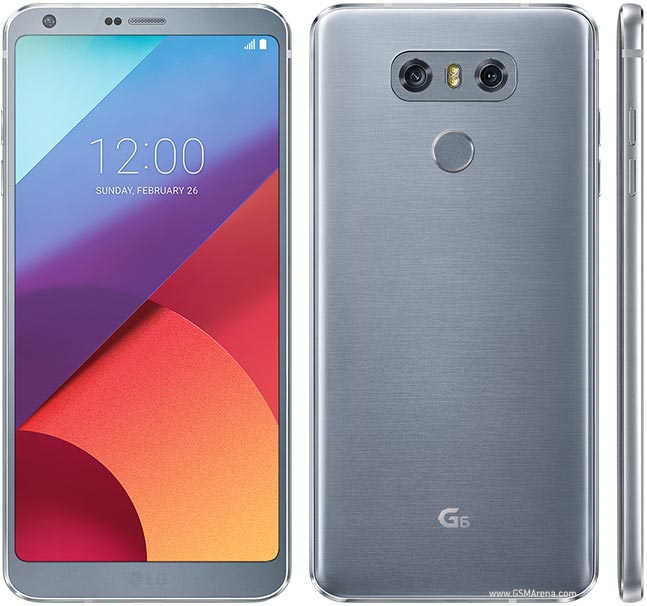








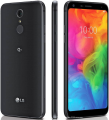
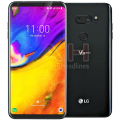
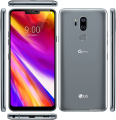

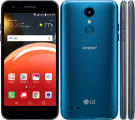
-16-GB.jpg)


-16-GB.jpg)
.jpg)











